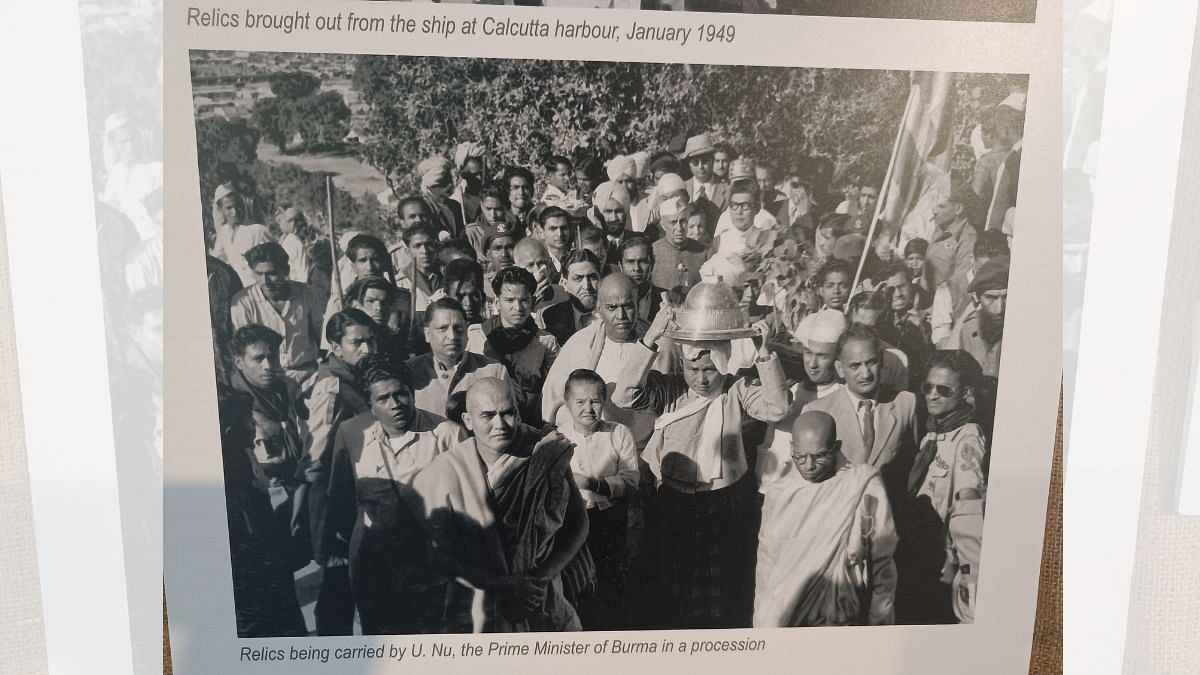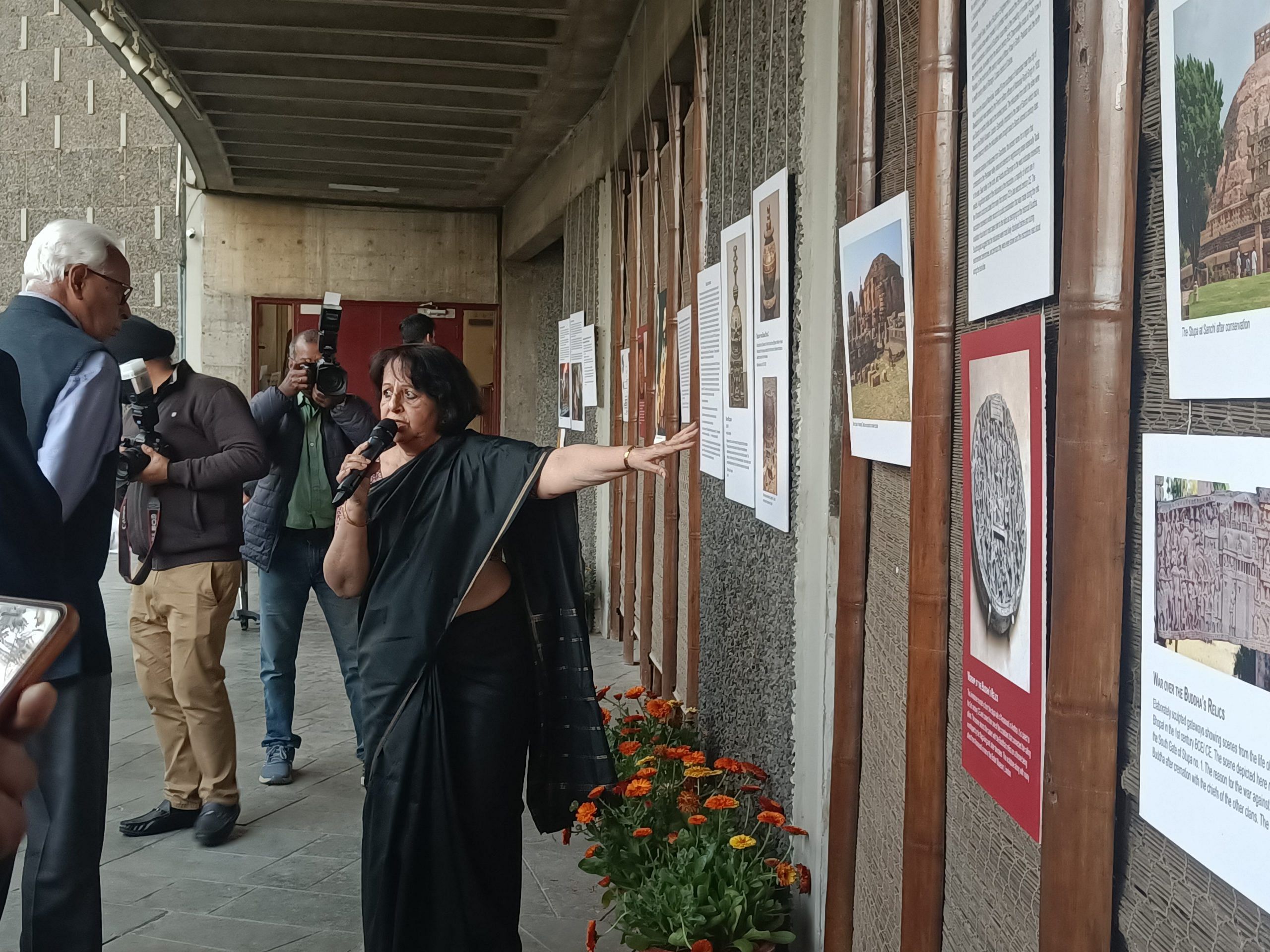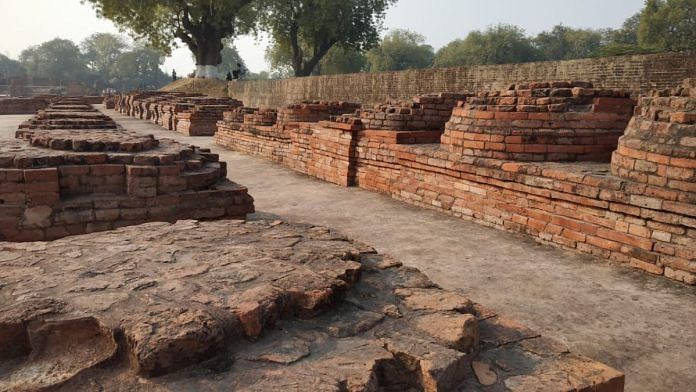New Delhi: The death of Siddhartha Gautama sparked a war in Kushinagar as neighbouring kingdoms and chieftains united against the Mallas, who were fiercely guarding Buddha’s relics. A priest named Drona intervened to defuse the conflict and ushered in “relic diplomacy”, which persists to this day. As the relics moved across India and other parts of the world, Buddhism spread as well.
But it was only when the British formally introduced archaeology in 19th century India that the quest to trace the relics and lost stupas began, said Himanshu Prabha Ray, a historian and archaeologist.
With the support of Professor Gitanjali Surendran, Ray has curated an exhibition detailing the rediscovery of Buddha’s relics. Travelling Relics: Spreading the Word of the Buddha is currently on display at India International Centre’s (IIC) Quadrangle Garden and will stay open to the public until 7 March. The exhibits on display narrate the story of both, the enshrinement of relics in stupas from the 3rd century BCE after Buddha’s death, and the search for relics in the 19th and 20th centuries. They include maps, archaeological photos of Buddhist sites, and narrative panels showing the cremation of Buddha and scenes from his life.
The unearthing of relics and stupas, using the tools of archeology, brought a dramatic change to the understanding of Buddhism in India. Buddha’s relics were found at Piprahwa, while at Nagarjunakonda, archaeologists found a gold tube containing pearls, a stone vessel with tooth relics, and caskets made of gold and silver.
The objects on display at the exhibition are not trapped in time—they show how relics continue to influence diplomacy even today. Earlier this month, the sacred relics of Buddha and two of his chief disciples Sariputra and Maudgalyayana from India arrived in Thailand for a 26-day public veneration.
Also read: Aai Larki to Mitro—Krishna Sobti’s female characters weren’t ahead of time. They were real
“The relics are used for diplomacy, often given to Buddhist countries like Siam (now Thailand). They are also associated with political power and authority, especially in Southeast Asia,” said Ray, at the inauguration of the exhibition on 22 February.
She led the audience, which included former Jammu and Kashmir governor NN Vohra, on a virtual tour of Buddhist history, demonstrating how relics journeyed across the globe.
“With colonial archaeology, there is a rise of a kind of sense of Buddhist Asia. Relics are actually supposed to stay in the stupas and have a sense of holiness and sacredness. But in the 19th century, we have a history that is evidenced and written in a way that hadn’t been done before,” said Surendran.

Travelling relics and Indian archaeology
As Buddhist sites were excavated extensively, they ushered in a new understanding of the religion and its relics.
Italian soldier Jean-Baptiste Ventura, a general in the Punjab court of Maharaja Ranjit Singh, personally funded the excavation of a Buddhist stupa at Manikyala (in present-day Pakistan) in 1830. He was hoping to find the resting place of Sikandar (Alexander) or his horse but instead found relic deposits. Subsequently, 15 other sites were identified at Manikyala, which is about 36 km southeast of Islamabad near the city of Rawalpindi.
These discoveries created widespread interest, said Ray. In 1891, Sri Lankan Buddhist activist and theosophist Anagarika Dharmapala founded the Maha Bodhi Society to bring together the international Buddhist community. And once again, relics proved a potent force in this mobilisation. One of the photos in the exhibition shows the return of the Sanchi relics from England to the Port of Calcutta (now Kolkata) in 1949, featuring Prime Minister Jawaharlal Nehru and President of the Maha Bodhi Society, Syama Prasad Mookerjee. Ray considers the return of these relics a success story for independent India.

In India, Nehru permitted archaeologists to carry out excavations at the site of then-proposed Nagarjuna Sagar Dam from 1954 to 1959 to save the cultural remains from being submerged. “The government of India held the dam in abeyance until the site was excavated,” said Ray. She added that the excavations at the site yielded 20 relic caskets, earthenware pots, and a gold tube containing pearls and ashes.
Monks and nuns had travelled with relics and set up stupas wherever they halted. One of the exhibits at the IIC was a map depicting the distribution of Buddhist sites in India from Dras in Jammu and Kashmir to Kaveripattinam in Tamil Nadu, and from Junagadh in Gujarat to Surya Pahar in Assam.

Impact of Buddhism
The excavations at the Buddhist sites, especially Sarnath, made a significant impact on post-Independence India. One of the significant structures discovered at the time was the ancient Mulagandha Kuti Vihara in Sarnath, Varanasi, where Buddha is said to have delivered his first sermon.
The Ashokan pillar capital, excavated at Sarnath in the early 20th century, and the Dharmachakra, or the Wheel of Dharma, were incorporated as national symbols. Ray considers Sarnath an important site because of how it shaped political thought in India. The 22 illustrations in the Constitution by Nandalal Bose feature images of Mauryan Emperor Ashoka spreading Buddhism, and Buddha giving his first sermon at Sarnath.
“This is the influence of archeology and history on the making of our Constitution,” said Vohra.
(Edited by Ratan Priya)



